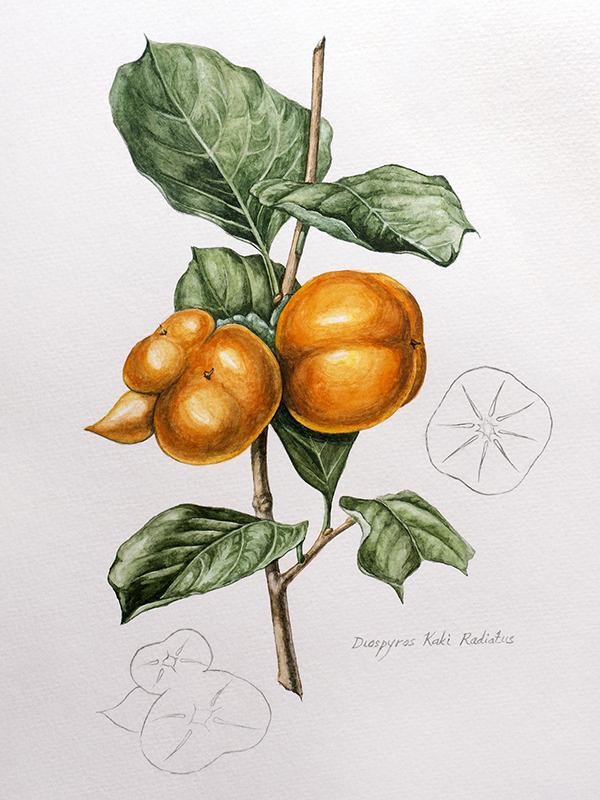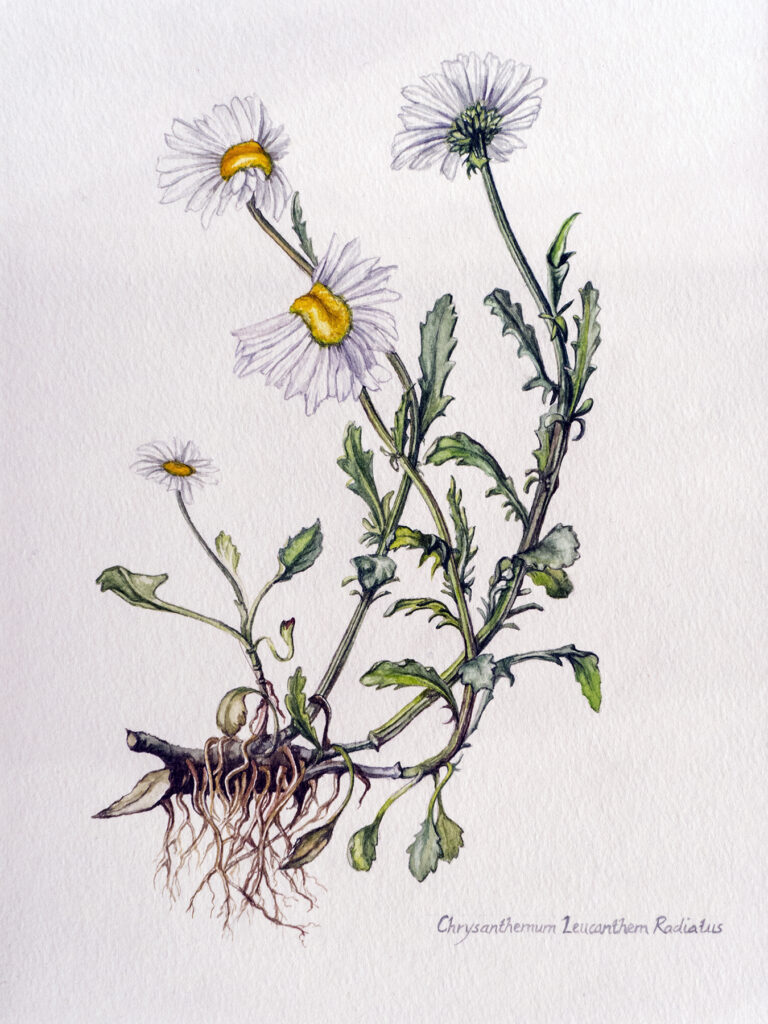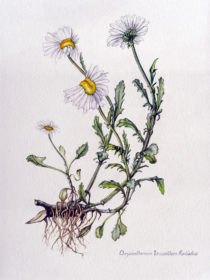Boundary Plants, 2015-16
Giovanni Aloi, “Why Look at Plants”
Boundary Plants is a series of paintings interrogating the implications of possible anthropogenic effects on ecological systems, in this case concentrations of radiation born of industrial scale energy production. The paintings Fear Daisy and Japanese Persimmon depict plants, the Chrysanthemum leucanthem commonly know as the “oxeye daisy” and Dyrospiros kaki, commonly known as the “Japanese persimmon”.
Each of these plants has been allegedly subject to radiation contamination in and around Fukushima, Japan, where the 2011 nuclear disaster took place due to a large tsunami destroying the Fukushima Daiichi Nuclear Power Plant. Though images of these plants have made their way to viral status on the Internet, often accompanied by politicized fear speech, the nature of their mutation is contested and controversial.
Biologists, citizens and conspiracy theorists alike alarmingly claim that the mutations are unquestionably a result of anthropogenic radiation contamination and evidence of endangerment; while others in the scientific community and in residence near the power plant remain skeptical of this allegation, suggesting that the mutations these plants are presenting are ‘natural,’ or part of the larger biological systems that have and will continue to exhibit biological mutations on a scale of ‘normal.’
Writing about this project can be found in Why Look at Plants, Edited by Giovanni Aloi, Brill 2019.


